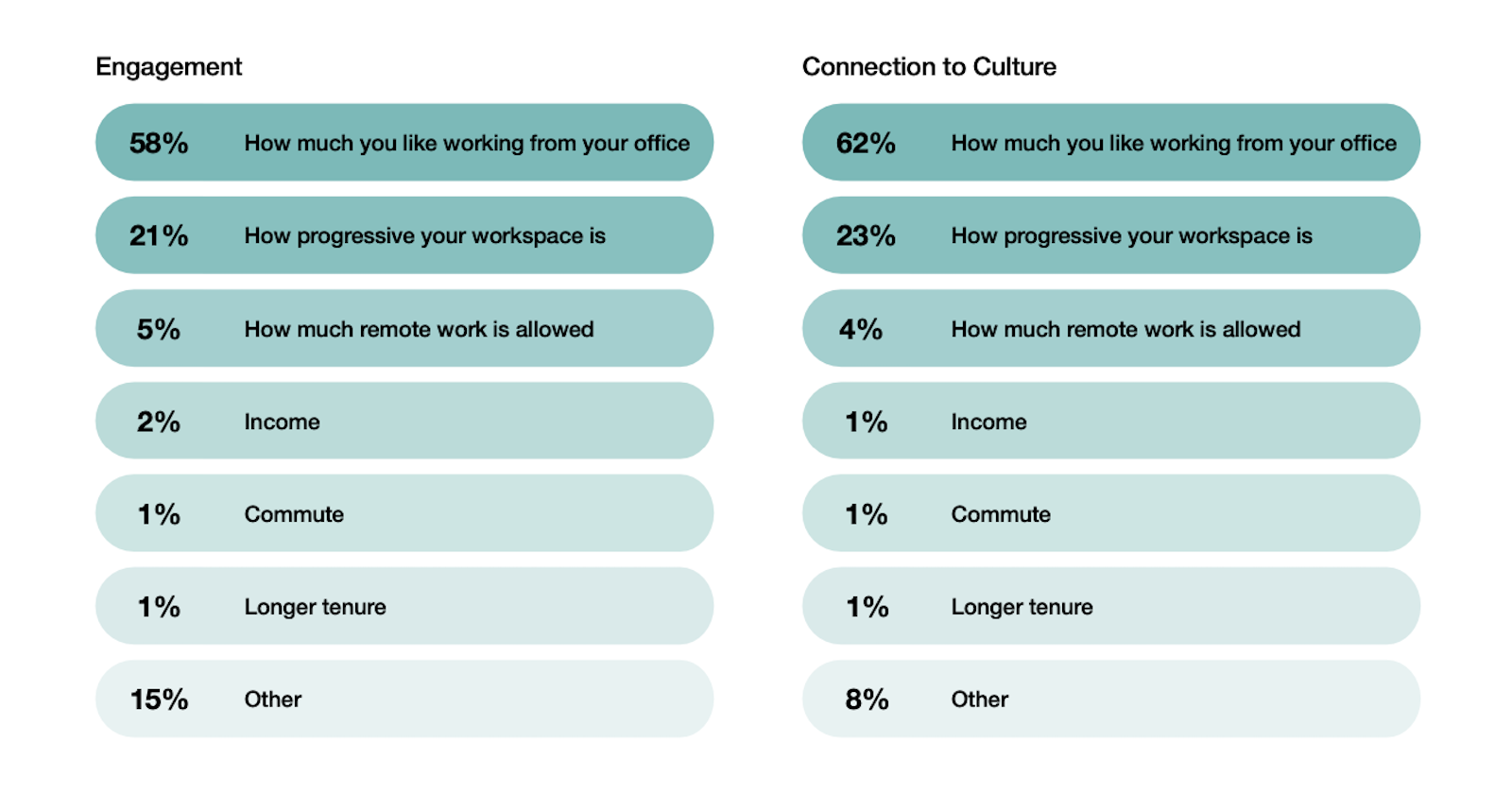We recently dissected some of Steelcase’s findings from its The New Era of Hybrid Work report in our exploration of tradition vs progression in office design and culture. Here, we delve even deeper into the findings to investigate what employees are really looking for in a workplace today. We focus on one question in particular: is remote work as highly desired as we might think?
The New Era of Hybrid Work report is a collection of 12 studies carried out across 11 countries with 57,000 employees and leaders. In this article, we spotlight some of the statistics published in the report to help guide you through your next office redesign, fit out or refurbishment project.

The danger of assumption
All too often businesses make assumptions about how their workplace should be designed or configured based on trends or media headlines. Less office space and more remote working is a prevalent and recent example of this.
Post-pandemic, so many business owners made the knee-jerk reaction of eradicating assigned desks and instead, turning their offices into all-singing, all-dancing, agile workspaces. Some even pivoted into downsizing their physical space—or exiting it entirely—and shifting their teams to remote working.
Of course, there is a place for these kinds of solutions—but it’s important not to just assume this what your staff want. Taking action on assumption runs a real risk of you investing a great deal of time and money in an office that doesn’t support its users.
Taking time to truly understand what employees want from a working environment and genuinely acknowledging what actually matters to them most is crucial. Taking this approach will boost motivation, productivity, wellbeing and staff retention—all vital components of a happy, successful, loyal workforce.

Engagement, Culture, Productivity
Part of Steelcase’s research looked at the impact of how much people like working from their office and how progressive their workspace is on a number of factors, including:
- Engagement
- Connection to culture
- Productivity
Here’s what the statistics revealed:
‘Engagement’
- 58% said how much they like working from their office impacts their engagement.
- 21% said how progressive their workspace impacts their engagement levels.
‘Connection to culture’
- 62% said how much they like working from their office impacts how connected they feel to company culture.
- 23% said how progressive their workspace impacts how connected they feel to company culture.
‘Productivity’
- 57% said how much they like working from their office impacts their productivity.
- 18% said how progressive their workspace impacts their productivity levels.
These figures prove just how critical it is to provide a physical working environment that people enjoy being in and a workplace culture with which they can align.

So, what does matter most to office users right now?
When asked what they value most in the workplace, relating more specifically to physical space design, configuration and fit out, here’s what the UK respondents came back with:
- 61% value reservable workspaces
- 60% value hybrid collaboration spaces
- 59% value single-person enclaves for hybrid meetings
- 53% value privacy
- 53% full or partially enclosed workspaces
- 52% value flexible furniture
- 49% value informal spaces to connect with colleagues
- 45% value having a large number of collaboration spaces
- 41% value sustainable office furniture
55% would choose an assigned workspace over more remote work days
Based on how the past couple of years have played out, the assumption would be that most office workers would relish the idea of more remote work and more working from home. As we mentioned above, many business owners, post-pandemic, assumed this to be the case and have set about redesigning their working environments accordingly.

However, Steelcase’s global report revealed that more than half of employees (55%) would prefer an assigned workspace over the option of more remote work days.
On top of this finding came another interesting statistic, relating back to how particular factors impact employee engagement, connection to culture and productivity:
Only 5% of employees said that how much remote work is allowed impacts how engaged, connected to company culture and productive they are.
So, although remote work brings many benefits to relevant teams and tasks, it seems it shouldn’t be the default approach to office design and culture. Instead, it’s about deploying these methods in a considered way and only applying where it truly optimises support to employees and how they operate.
While most (78%) UK leaders like working from their office, under half (46%) of UK employees feel the same way.
This just goes to show that it’s time for business owners to do more when it comes to taking the feelings and desires of their workforce into consideration. This is just one of the reasons why we believe it to be so important to include staff in the office design process.




